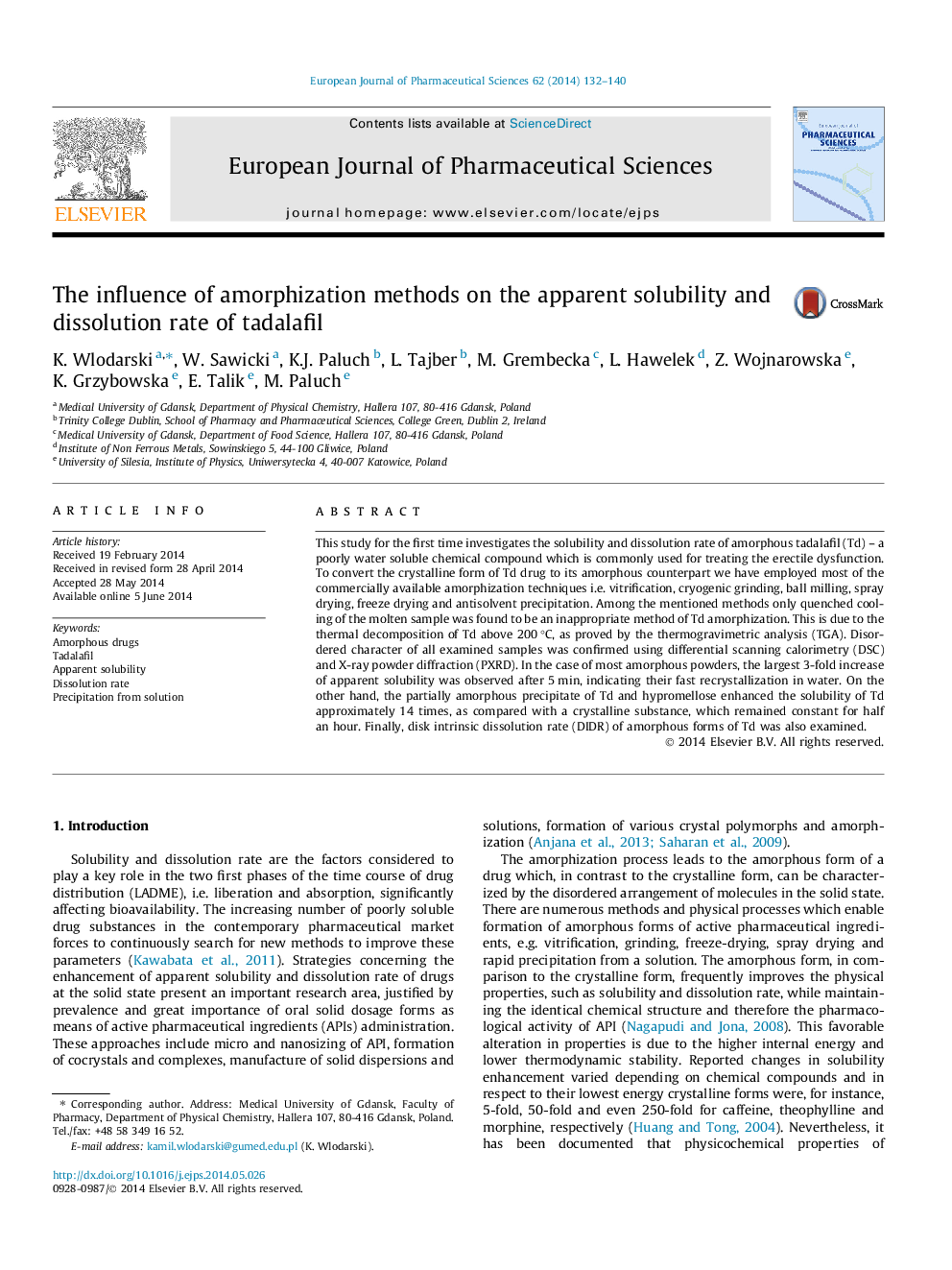| کد مقاله | کد نشریه | سال انتشار | مقاله انگلیسی | نسخه تمام متن |
|---|---|---|---|---|
| 2480391 | 1556188 | 2014 | 9 صفحه PDF | دانلود رایگان |
This study for the first time investigates the solubility and dissolution rate of amorphous tadalafil (Td) – a poorly water soluble chemical compound which is commonly used for treating the erectile dysfunction. To convert the crystalline form of Td drug to its amorphous counterpart we have employed most of the commercially available amorphization techniques i.e. vitrification, cryogenic grinding, ball milling, spray drying, freeze drying and antisolvent precipitation. Among the mentioned methods only quenched cooling of the molten sample was found to be an inappropriate method of Td amorphization. This is due to the thermal decomposition of Td above 200 °C, as proved by the thermogravimetric analysis (TGA). Disordered character of all examined samples was confirmed using differential scanning calorimetry (DSC) and X-ray powder diffraction (PXRD). In the case of most amorphous powders, the largest 3-fold increase of apparent solubility was observed after 5 min, indicating their fast recrystallization in water. On the other hand, the partially amorphous precipitate of Td and hypromellose enhanced the solubility of Td approximately 14 times, as compared with a crystalline substance, which remained constant for half an hour. Finally, disk intrinsic dissolution rate (DIDR) of amorphous forms of Td was also examined.
Figure optionsDownload high-quality image (92 K)Download as PowerPoint slide
Journal: European Journal of Pharmaceutical Sciences - Volume 62, 1 October 2014, Pages 132–140
